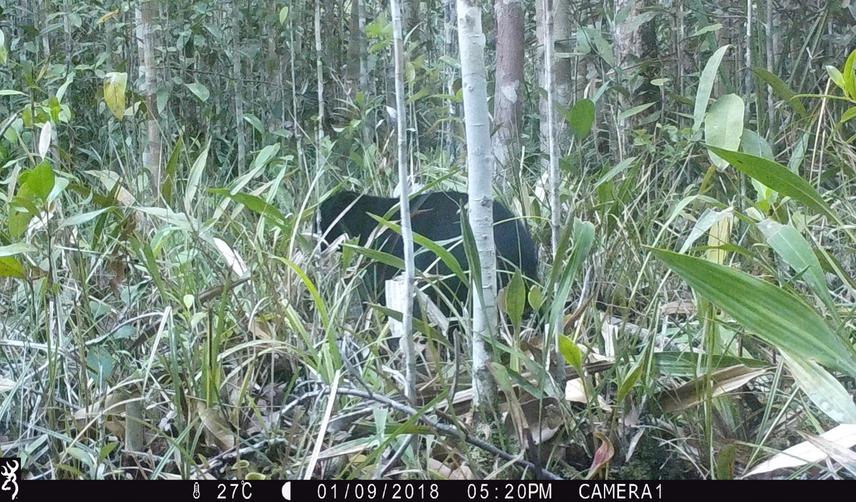Prescillia R Putri
Rapid growth of the palm oil industry has raised grave concerns about its detrimental effects on Indonesian biodiversity. Although palm oil companies have set aside conservation areas within their plantations to fulfil demand for environmentally friendly production, little is known about whether these areas have appropriate ecological characteristics (e.g., size, habitat quality, etc.) to support conservation of medium and large size mammals. This information is needed to evaluate and improve approaches for conservation within palm oil plantations. We expect to have a direct impact on design and management of conservation areas and the ability of these areas to support mammals.

Sun bear (Helarctos malayanus).
The palm oil industry has become one of the main drivers of economic growth in Indonesia, and throughout tropical regions. However, at the same time, the enormous growth of the industry often leads to severe environmental impacts such as large-scale deforestation, habitat fragmentation, and loss of biodiversity. In order to reduce the adverse environmental effects of palm oil production, the Roundtable on Sustainable Palm Oil (RSPO) was established in 2004 with a goal of supporting the growth and use of sustainable palm oil and encouraging wildlife-friendly agricultural practices. Companies that participate in RSPO conduct rapid conservation assessments on their lands and, subsequently, set aside High Conservation Value Areas (HCVA) within or adjacent to palm oil plantations. In principle, HCVAs should provide adequate resources and protection for wildlife within palm oil plantations. However, despite their designation as conservation areas, the value of HCVAs for maintaining biodiversity is largely unknown.
Design and management of HCVAs for long-term conservation could be improved by greater understanding of which species occur in the HCVAs and how attributes of the HCVAs and surrounding landscape influence presence of wildlife in these areas. The ability of conservation areas to support wildlife will be influenced by characteristics of the HCVA patch or strip (e.g., habitat quality and size) and attributes of the landscape surrounding the conservation areas (e.g., type of matrix). Such landscape thinking generally is not taken into account in designing HCVAs. Additionally, traits of individual species (e.g., body size, home range size, etc.) will influence the likelihood that species can use these conservation areas.
In this study, surveys with remotely triggered cameras will be used to evaluate occurrence of medium and large mammals in conservation areas within palm oil plantations. Study will evaluate how characteristics of these conservation areas and the surrounding landscape, such as size of the forest patches and age of palm oil plantation surrounding the forest affect the distribution of mammals. We will assess how traits of individual species, such as body size, diet breadth, habitat breadth and vulnerability to hunting influence the occurrence of these species in HCVAs in palm oil plantations. Through this study, we expect to provide information on the attributes of HCVAs that promote species occurrence and, thus, enhance the conservation value of HCVAs. Currently, because most conservation areas within palm oil plantations are both small and isolated, we expect that broader landscape level approaches to designing HCVAs may be needed to maintain mammals in this landscape.